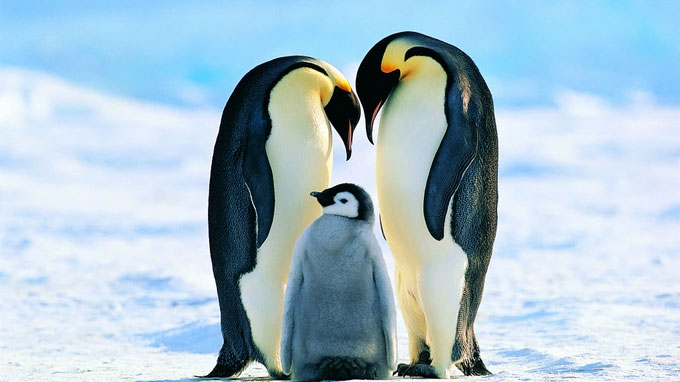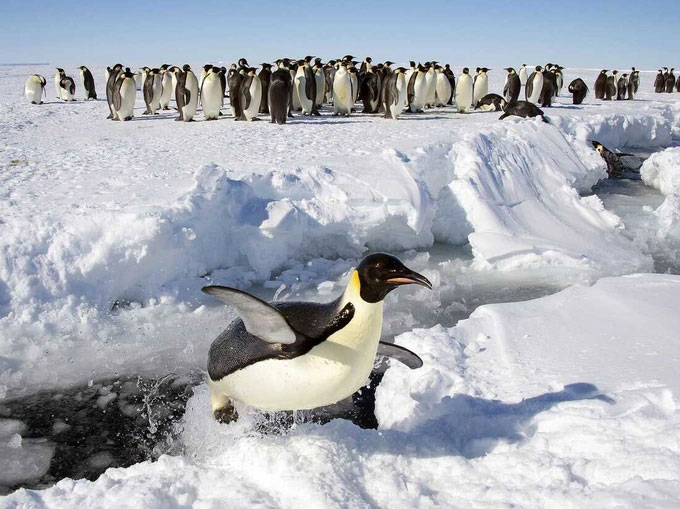The iconic bird of Antarctica is at risk of disappearing from Earth due to the impacts of climate change.
On October 25, the U.S. Fish and Wildlife Service (USFWS) officially announced the addition of the Emperor Penguin (Aptenodytes forsteri) to the list of threatened species, calling for expanded measures to protect them.

Emperor penguins added to the list of threatened species. (Photo: Getty).
“The extinction crisis is escalating. We need to make efforts to conserve species before population declines become irreversible,” stated Martha Williams, Director of USFWS. “The inclusion of the Emperor Penguin on this list serves as a wake-up call, but it is also a call to action for the community.”
According to USFWS, the impact of climate change is causing significant loss of sea ice, and the population of this bird species is projected to decline “substantially” in the near future, specifically by about 26% by 2050. However, this figure could rise to 50% if carbon emissions remain excessively high.
A study published in 2021 suggested that 70% of the Emperor Penguin population in Antarctica could face extinction by 2050 if current rates of sea ice loss continue.
In the worst-case scenario, 98% of the Emperor Penguin population could disappear by 2100, making recovery efforts extremely challenging, if not impossible.
Currently, there are approximately 61 breeding colonies of Emperor Penguins along the Antarctic coast, comprising about 270,000 to 280,000 breeding pairs.

Penguin populations are declining sharply due to melting ice, a result of climate change in Antarctica (Photo: NPR).
To adapt to the harsh conditions of Antarctica, Emperor Penguins possess a unique body structure that allows them to function in low-oxygen environments, along with the ability to reduce their metabolic rate, even “shutting down” non-essential organ functions to conserve energy.
The daily diet of Emperor Penguins consists mainly of fish, but they also occasionally consume crustaceans, mollusks, and squid.
Despite having a relatively abundant food supply, this species is considered highly sensitive to climate. Specifically, as regional temperatures rise and ice melts, they face a series of challenges such as food shortages, disease, and decreased hatching success rates…
Previous simulation algorithms indicated that if sea ice loss due to global warming continues, by the end of the 21st century, the iconic bird of Antarctica could see its population decline by up to 87%.


















































